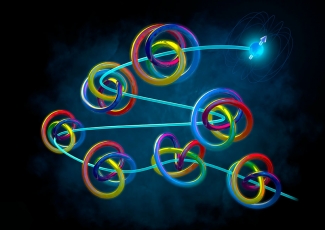In this era of the pandemic, the amount of internet hacking has increased dramatically. Hackers threaten our security, taking information before anyone realizes the network has been compromised. These threats are serious and require creative and immediate action to resolve.
For scientists at JILA, a quantum internet is a way to resolve these actions. Essentially, a quantum internet connects different quantum computers or different quantum users into a network to achieve coordinated quantum tasks, explains Shuo Sun, a University of Colorado Boulder Assistant Professor of Physics and JILA Associate Fellow. A quantum internet can enable secure communication, distributed quantum computing, and distributed sensing. In order for a quantum internet to work, it must be built using the principles of quantum mechanics. A quantum internet is a very broad concept and there are really many fascinating things that researchers are looking into to use it.
Photons and Encryption:
When looking within a quantum internet, the Sun Lab is looking at specifically photons. Photons-tiny packs of light-can exist in two states at once. If a photon is like a computer bit (which is in binary code), it’s both a 1 and a 0 until it is observed; then it collapses into a 1 or 0 upon observation. This quantum superposition of photons allows for a receiver to know immediately if their message has been read by a hacker, once the photons’ superpositions collapse.
There are some complications within photons being used as vehicles for encryption, as they can get lost by being absorbed by material in fiber optic cables. When the photons get lost, their valuable information is lost as well. And, thanks to quantum mechanics, scientists can’t just make copies of the information.
Entanglement and Quantum Knots:
Instead, scientists can use quantum mechanics, specifically entanglement, to protect the photons from being absorbed. Entanglement connects quantum particles, stated Professor Sun. By entangling these photons, scientists tie little quantum knots between them, so they jointly represent the information to be delivered. The photons aren’t just paired off within these quantum knots. They’re connected to hundreds of other photons in a tree-shaped pattern. The robust redundancy of these photons means that scientists can still read the information, even if a few photons are lost.
Using a mirror and a photon emitter, the Sun Lab at JILA have devised a means of quickly tying the quantum knots. The emitter sends a particle of light toward the mirror. It bounces off the mirror and passes back through the emitter, entangling itself with the next particle of light.
According to Shuo Sun, the lab is planning to experimentally realize this photon generation scheme as an efficient way to encrypt information. They believe that their solid-state quantum emitter, combined with nanophotonics, offer a very promising approach to realizing this scheme. “It is possible to realize a source of multipartite entangled photons on a semi-conductor chip” stated Sun. Overall, a quantum internet allows us to connect remote and isolated quantum systems into a larger system that can be more powerful.
The Sun Lab paper was published in Physics Review Letters on 24 November, 2020.
-Written by Kenna Castleberry, Science Communicator, JILA




